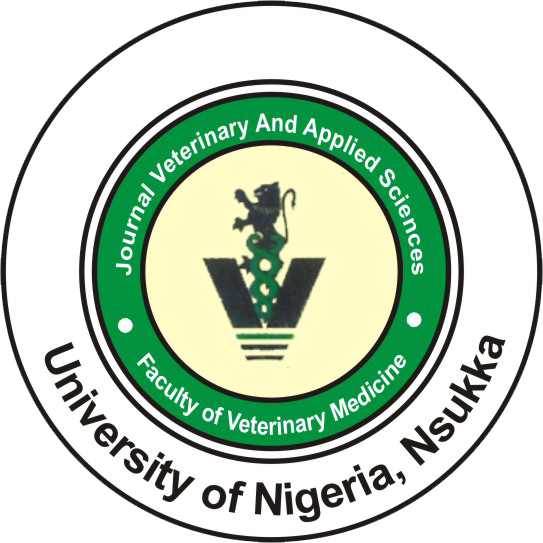University of Nigeria
ISSN: 2315 - 6856
e-ISSN: 2636 - 5553
Journal volumes
Powered by: RockSystems Global Services Ltd.
rocksystemsglobal@gmail.com (+2348035271306)
www.rocksystemsglobal.com
Volume 14, Issue 1: 2024 - Article 138
Abstract
Tylosin residue (TR) occurs in tissues of animals treated with tylosin, and this is of public health concern. This study compared the levels of detection of tylosin residue in muscle and liver tissues of chickens treated with tylosin, using four testing techniques: Premi® test (PT), Four plate test (FPT), enzyme linked immunosorbent assay (ELISA) and high performance liquid chromatography (HPLC)-based tests. Sixty chickens randomly assigned to two groups (A and B) of 30 each were used for the study. Group A chickens were given 10 mg/kg tylosin by intramuscular injection, while Group B chickens were given 2g/L tylosin orally for five days. Group A birds were sacrificed ½, 1, 2, 4, 8, 12, 24, 48 and 72 hours post injection (PI) of tylosin, while Group B birds were sacrificed 24, 36, 48, 60, 72, 84, 96, 120 and 144 hours post completion of oral dosing (PCOD). Muscle and liver tissues were collected for assay from both groups, following standard procedures for the four tests. Results showed that PT did not detect TR in liver of both Groups A and B chickens but detection in muscle using PT was inconsistent. FPT detected relatively low levels of TR in both muscle and liver of Group A and B chickens with no detection at 84 hour PCOD for muscle and 120 hours PCOD for liver. ELISA and HPLC-based tests detected relatively higher levels of TR all through, in both Groups A and B chickens, though the levels were below the 100 µg/kg maximum permissible limit, except slightly higher results recorded with muscle tissue of Group B chickens tested with ELISA at 24 and 36 hours PCOD. The PT and FPT showed varied sensitivities and specificities when compared to the HPLC. There was a strong (high) positive and significant correlation between the levels of TR detected by ELISA and HPLC for both muscle and liver tissue in both groups, but the correlation between TR levels detected by FPT and HPLC was low and not significant in Group A chickens.
Keywords: Tylosin residue; Chicken; Muscles; Liver; Premi® test; Four plate test; ELISA; HPLC.
How to cite this article:
Onwumere-Idolor OS, Nwankwo IO, Ezenduka EV, Nwanta JA and Anaga AO (2024). Comparison of Premi® test, Four Plate Test, ELISA and HPLC tests in the detection of tylosin residue and its depletion time in chickens treated with tylosin by intramuscular injection and oral routes. Journal of Veterinary and Applied Sciences, 14(1): 469 – 480.
*Correspondence: E-mail: innocent.nwankwo@unn.edu.ng Phone: +2348036202116

Comparison of Premi® test, Four Plate Test, ELISA and HPLC tests in the detection of tylosin residue and its depletion time in chickens treated with tylosin by intramuscular injection and oral routes
Onyinye S. Onwumere-Idolor 1, 2, Innocent O. Nwankwo 2 *, Ekene V. Ezenduka 2, John A. Nwanta 2 and Aruh O. Anaga 3
1 Department of Animal Health and Production, Faculty of Agriculture, Delta State University of Science and Technology Ozoro, Delta State, Nigeria.
2 Department of Veterinary Public Health and Preventive Medicine, Faculty of Veterinary Medicine, University of Nigeria, Nsukka, Nigeria.
3 Department of Veterinary Physiology and Pharmacology, Faculty of Veterinary Medicine, University of Nigeria, Nsukka, Nigeria.
Download .pdf copy here >>






